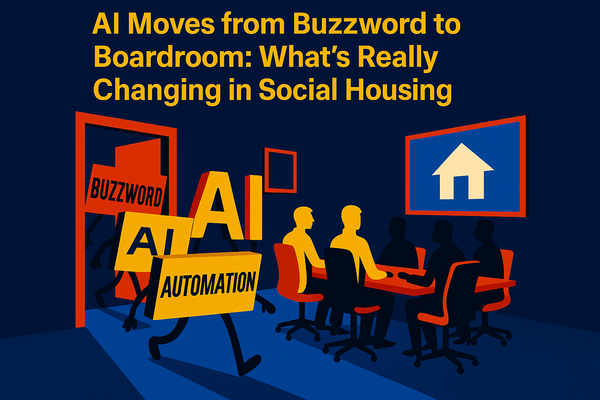Sentiment Analysis: What It Is and How It Can Help Social Housing Landlords

What Is Sentiment Analysis?
Sentiment analysis — also known as opinion mining — is a process that uses artificial intelligence (AI) and natural language processing (NLP) to determine the emotional tone behind a piece of text. It identifies whether a message is positive, negative, or neutral.
It can be applied to emails, survey responses, social media posts, online reviews, and more — helping organisations understand how people feel about their services and experiences.
How Does Sentiment Analysis Work?
- Text Mining: AI algorithms scan large volumes of unstructured text data to extract opinions, feelings, and attitudes.
- Classification: The software categorises text as positive, negative, or neutral, and can identify both the subject and the opinion holder.
- Scalability: It processes massive datasets quickly and objectively, reducing human bias and saving time.
Why Is Sentiment Analysis Important for Social Housing Landlords?
1. Enhanced Understanding of Tenant Satisfaction
Landlords can go beyond basic satisfaction scores by uncovering the real reasons behind tenant feedback. Analysing comments from surveys, complaints, emails, and social media reveals recurring issues — such as dissatisfaction with repairs or communication delays — enabling targeted action.
2. Early Warning System for Service Failures
Monitoring tenant sentiment regularly offers early warnings about potential problems. For example, a spike in negative comments about maintenance response times can prompt immediate reviews and improvements.
3. Data-Driven Decision Making
Aggregated feedback helps landlords make informed decisions based on real tenant experiences, not assumptions — leading to better planning and resource allocation.
4. Improved Tenant Retention
By addressing negative sentiment early, landlords can resolve problems before tenants consider moving out. Happy tenants stay longer, reducing turnover and costs, and are more likely to recommend their homes to others.
5. Compliance with Regulatory Requirements
With rising regulatory expectations — like the Tenant Satisfaction Measures (TSMs) in the UK — sentiment analysis helps demonstrate transparency and trackable improvements, supporting compliance.
Practical Applications in Social Housing
- Survey Analysis: Automatically review open-ended survey comments to identify themes and trends.
- Complaint Monitoring: Detect sentiment in complaints and prioritise urgent cases.
- Social Media Listening: Track public sentiment to understand reputation and spot emerging concerns.
- Dashboard Reporting: Use live dashboards to monitor sentiment by area, topic, or time period — ideal for reporting to boards or regulators.
Leading Tools and Solutions
| Tool/Provider | Key Features | Use Case for Landlords |
|---|---|---|
| Wordnerds | AI-powered qualitative feedback analytics | Analyse tenant feedback from all channels |
| HubSpot Service Hub | Survey and support ticket sentiment analysis | Monitor and respond to tenant satisfaction |
| Talkwalker | Real-time sentiment monitoring across platforms | Track sentiment across digital channels |
Getting Started: Steps for Social Landlords
- Define Objectives
Clarify what you want to achieve — improved satisfaction, reduced churn, or better regulatory reporting. - Select Tools
Choose platforms that integrate with your existing systems and handle the types of feedback you collect. - Collect Data
Pull together survey responses, complaint logs, social media mentions, and other text-based feedback. - Analyse and Act
Review sentiment insights regularly, share with teams, and implement changes based on what the data reveals. - Monitor Impact
Track sentiment over time to see whether your interventions are making a difference, and refine as needed.
Conclusion
Sentiment analysis transforms everyday tenant feedback into actionable insight. It allows social housing landlords to deliver better services, reduce risk, and meet regulatory expectations with confidence.
By adopting these tools and techniques, landlords can become more proactive, improve tenant experiences, and build stronger, more resilient communities.



